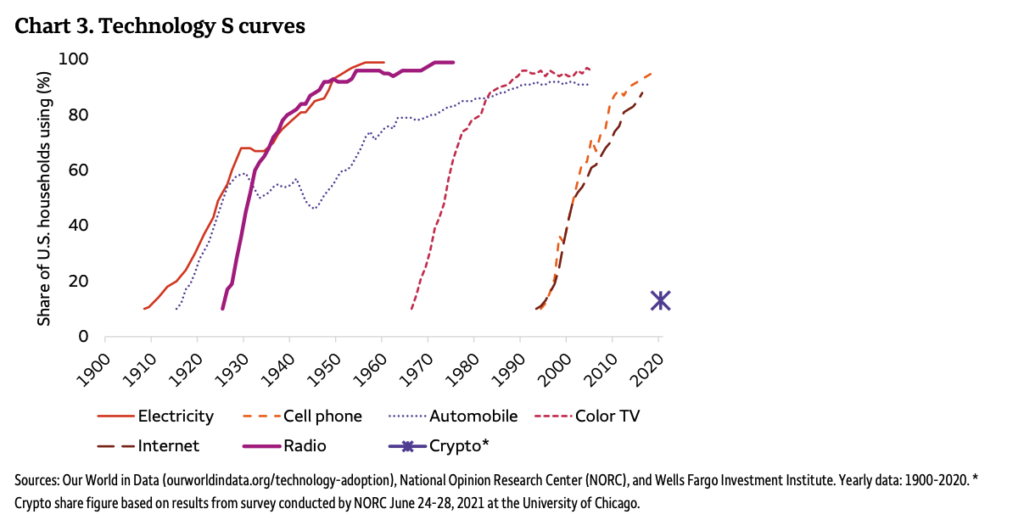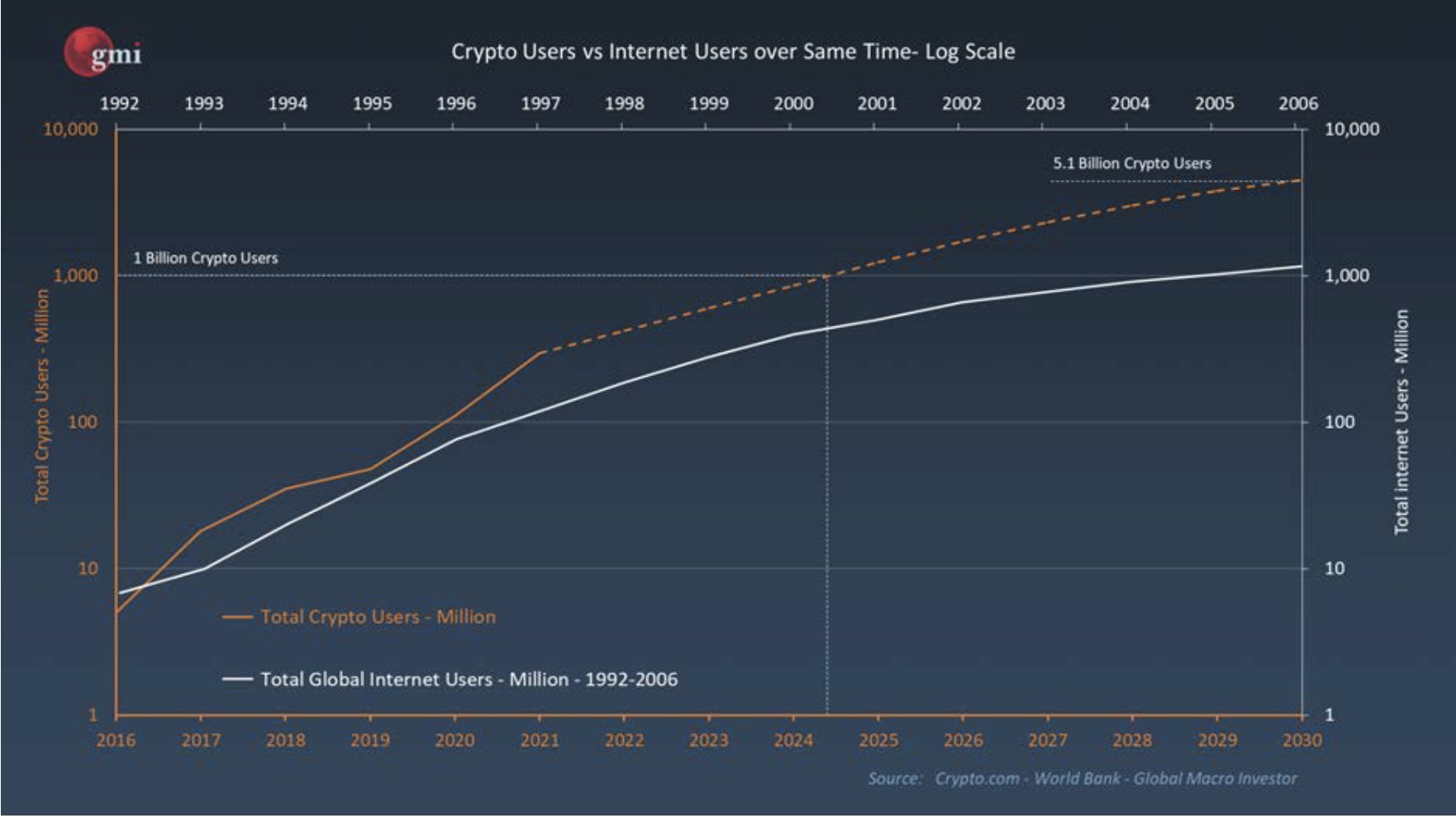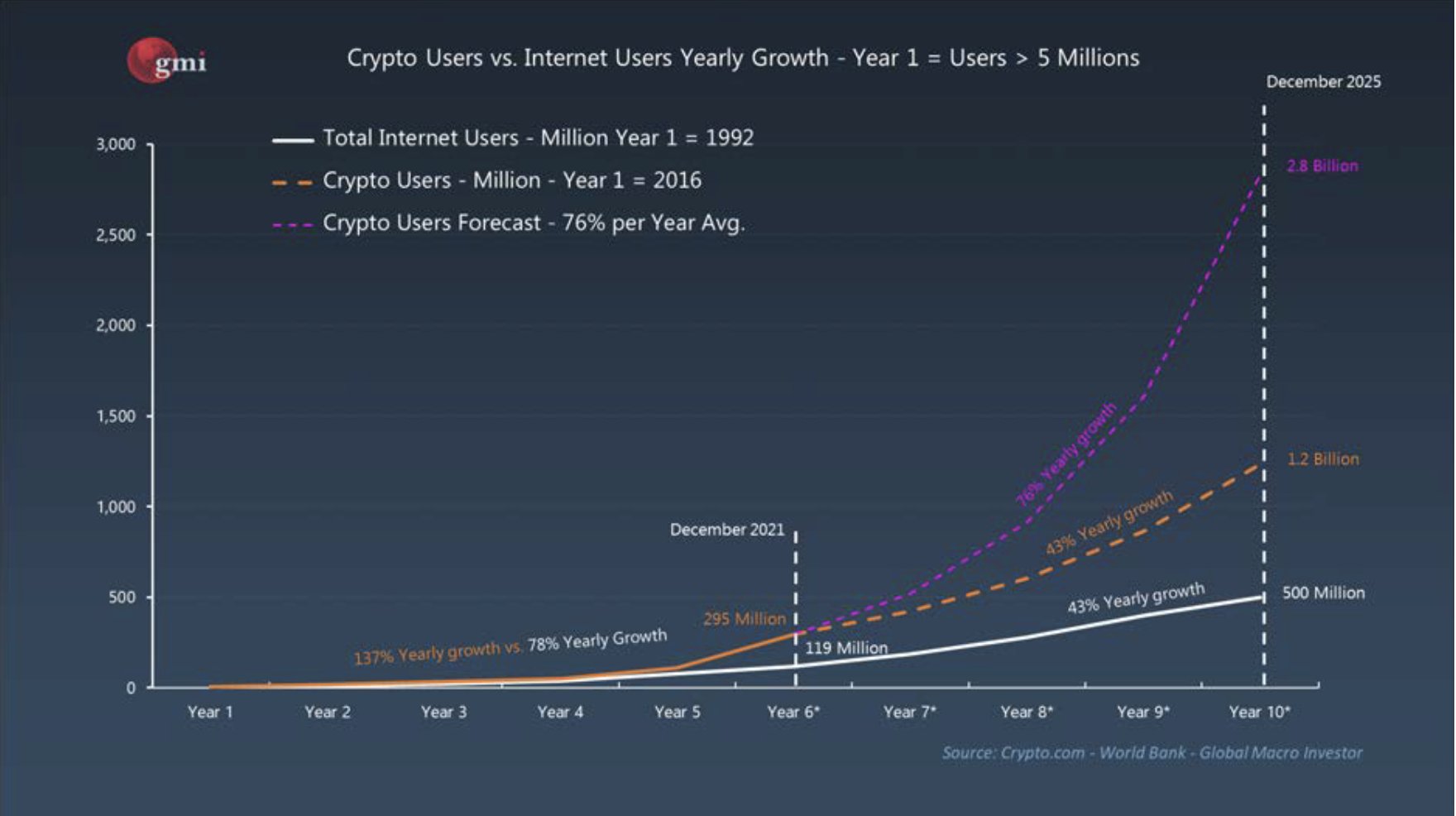prologue
Since its birth in 2010, Bitcoin has seen an exponential rise in value and popularity, laying the foundation for a market worth $1 trillion in 10 years. In the wake of broader macroeconomic turmoil, adoption of cryptocurrencies is on the rise, with millions of new users joining the decentralized world of cryptocurrencies as a hedge against traditional finance.
Despite its current growth, some believe the crypto industry has a limited lifespan. Its critics expect growth to plateau and decline as regulatory pressures and internal market struggles create more user losses.
But many expect this new technology to follow the same adoption curve that the internet and telephones did before it.

This report examines the factors that contribute to Bitcoin’s growth and help the cryptocurrency industry reach 1 billion users by 2025.
Diffusion of innovation
The diffusion of innovation theory best describes the speed at which new technologies are adopted and diffused. This explains how the adoption of new technologies follows a bell-shaped curve. That is, a small group of early innovators and early adopters are replaced by a large group of early majority adopters, followed by an even larger group of late majority adopters. Finally, the bell curve ends with a small group of late adopters.

The ubiquitous bell curve graph has been applied to everything from steam engines to telephones, demonstrating how quickly these technologies were adopted by wider society.
Applying the scale to Bitcoin shows that the crypto market is still in its infancy. 2022 report Wells Fargo has calculated that cryptocurrencies have not yet reached an inflection point in adoption compared to the popularity of the Internet in the mid-to-late 1990s.
Comparing Bitcoin to the internet has become a go-to case study for those rooting for the success of the crypto industry. It is growing at 137% year-on-year.

Aside from the exponential growth both the internet and bitcoin experienced in their early days, there are many other similarities between the two technologies. Both rose to popularity after being introduced into the mainstream by a small group of tech-savvy users. Both struggled to attract larger audiences due to the technical knowledge required to use it. Both experienced regulatory pressure as government agencies struggled to police the technology.
Problems in defining Bitcoin adoption
The calculations for crypto adoption are very complex. Unlike the Internet, where we need to look at how many people have direct access to an Internet connection, cryptocurrencies and their adoption are much more difficult to quantify.
Adoption can be measured by the amount of capital flowing into the market. While this method certainly puts market value into perspective, it tells us very little about the actual number of his active users.
It can also be measured by transaction volume and number of transactions on a particular network.
Another reliable way to measure adoption is by calculating the number of users. However, this poses another problem due to the pseudonymity of blockchain technology. Simply counting the encrypted addresses does not give reliable results, as one address does not correspond to one user of hers.

In this report, the increase in non-zero Bitcoin addresses and the number of active users on centralized exchanges are signs of increasing adoption.

Calculation of crypto adoption
The number of users on centralized exchanges can be used as a proxy for broader crypto adoption.
For example, consider Coinbase. By 2021, approximately 25% of the total crypto market will use US-based exchanges, making it one of the most popular cryptocurrency services in the world. As of February 2023, the exchange has approximately 110 million verified users.
With 92% CAGR in users year-over-year, Coinbase outperforms the internet with 43% CAGR YoY. If the exchange continues to grow its user base at a conservative Internet estimate of 43%, it could triple its user base by 2025.
Comparing the size of the crypto user base to the internet further confirms the growth potential of the industry.
Some experts believe that the current state of the cryptocurrency industry is on par with the Internet in 1999. At the time, the new technology, later known as the dotcom boom, had about 248 million users. It took him six more years before the Internet reached 1 billion users in 2005.
Some estimates indicate that the cryptocurrency industry could have around 605 million users in 2023. Applying the 43% year-on-year growth rate the internet has seen for cryptocurrencies, the sector shows he could reach 1.2 billion users by 2025.
Even with the 17% year-on-year growth rate experienced by the internet between 2002 and 2006, the cryptocurrency industry could see over 900 million users in 2025.
According to the diffusion of the innovation model, the technology is still in its early stages, reaching 13.5% of the market.
Considering that 605 million cryptocurrency users by 2023 will represent 7.5% of the world’s population, the industry is still in its early stages. 605 million users are still considered early adopters. Because he needs 700 million more users for the cryptocurrency to reach the early majority.

Conclusion
Although cryptocurrencies and the Internet are inherently different technologies, they have many similarities due to their transformative potential.
Applying the most modest adoption rate the internet has ever seen for cryptocurrency would show that not only could the industry reach a billion users, but it could do so much faster than any other technology in history.
Growing distrust of the traditional financial system, fueled by macroeconomic turmoil, has made cryptocurrencies, and Bitcoin in particular, a very useful proposition for millions of people. This rate of adoption is likely to accelerate as the technology continues to develop and its use cases grow.
However, it’s important to note that these are rough estimates. Repeated black swan events could impact this adoption rate and set the industry back for years. A tectonic shift in regulatory approaches could render cryptocurrencies essentially unusable in many parts of the world.
Nevertheless, looking at the growth of the cryptocurrency industry in perspective shows that it is still in its early stages, waiting to reach its full potential.


